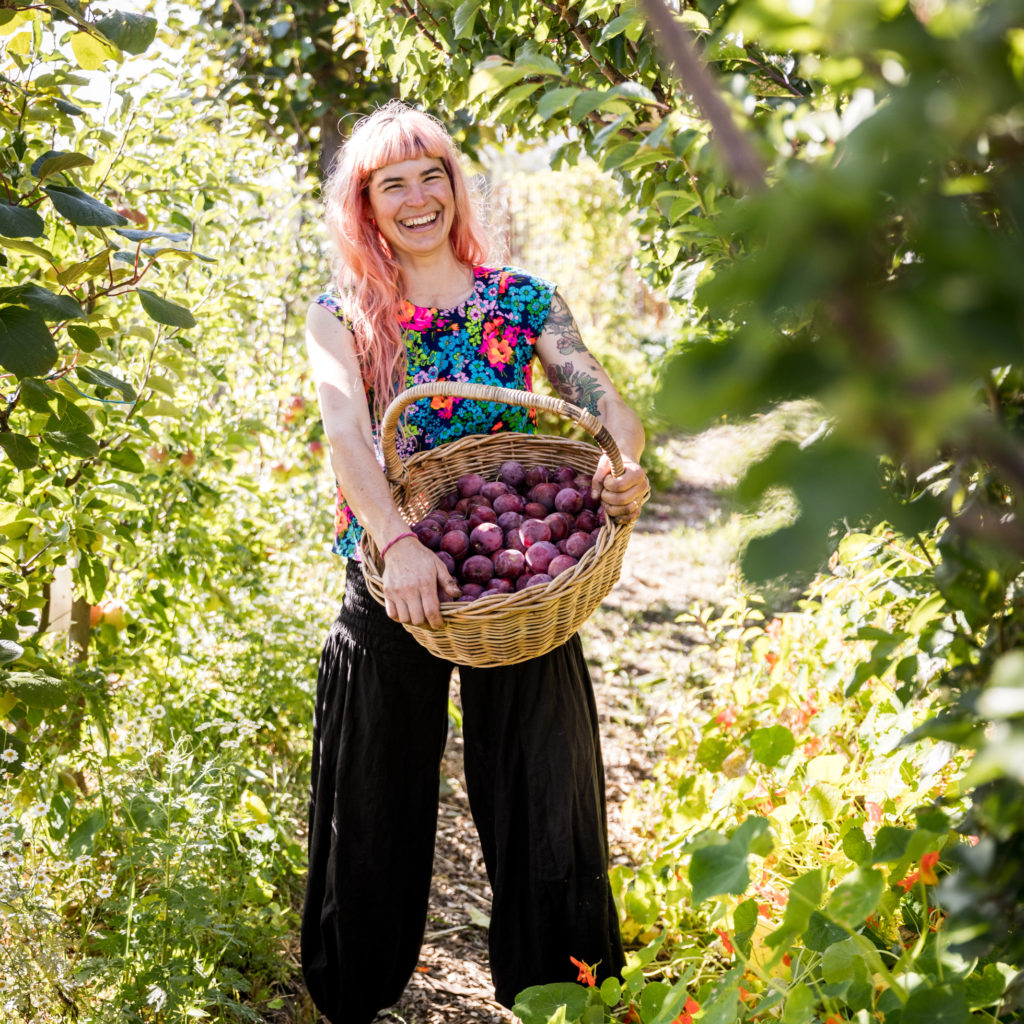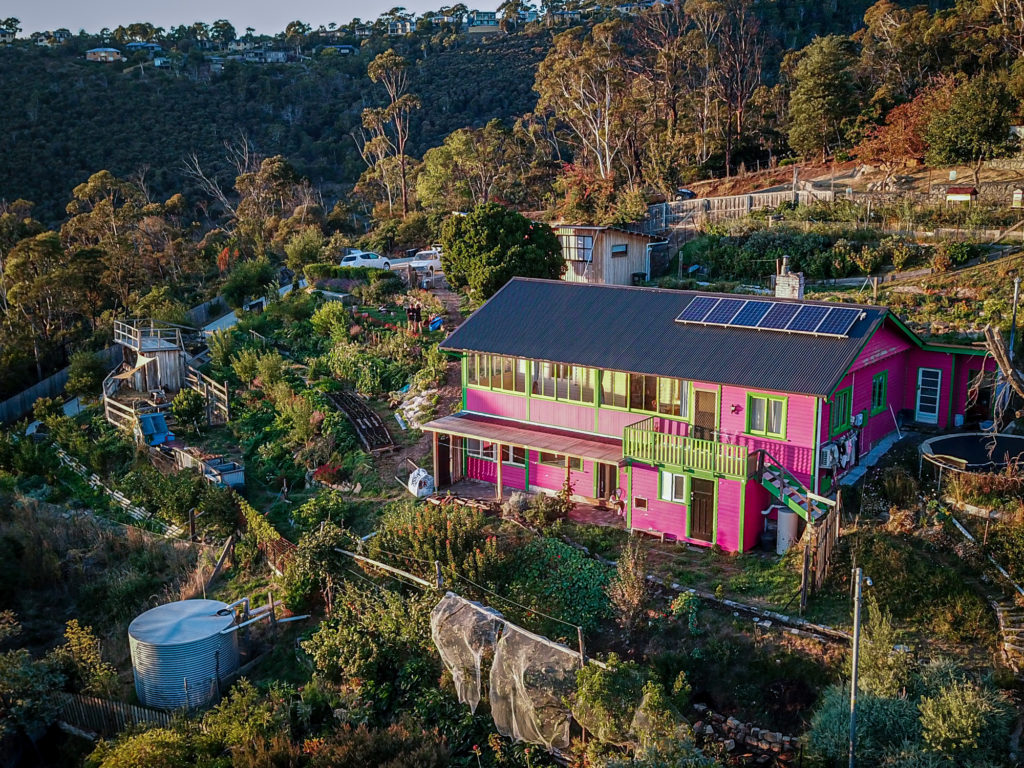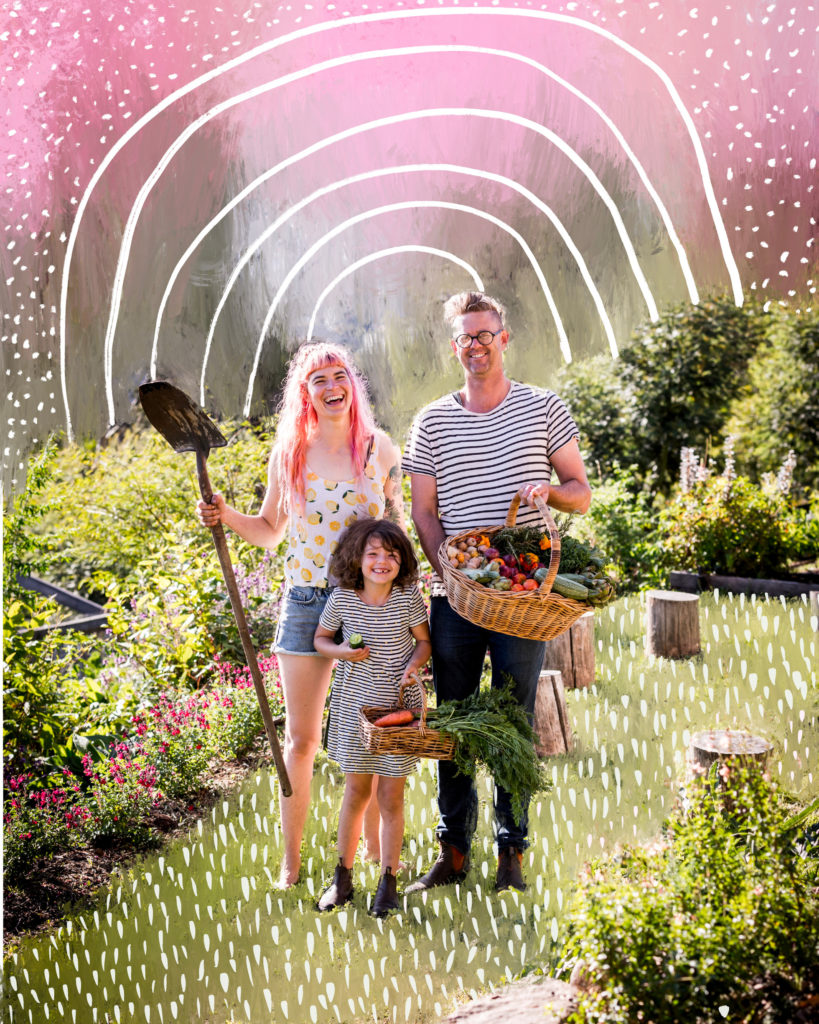Living a Good Life in a Climate Emergency
by Sarah Aitken

The Intergovernmental Panel on Climate Change (IPCC) recently presented us with a code red for humanity. It plunged some into a paralysed state of despair, whilst pushing others to action.
Hobart permaculturist, educator and Gardening Australia guest host Hannah Moloney aims for the latter. She has just released her first book, The Good Life: How To Grow A Better World, guiding readers on how to live well in a time of massive uncertainty. Hannah spoke to Sarah Aitken about the book and offered some ways we can positively impact our local community.
Why did you write this book and why now? I wrote this book to answer the question ‘how can we live a good life in the face of the climate emergency’. The climate emergency is very much here and happening and the dominant narrative around it is full of doom and gloom which puts people into a state of despair – there’s a very serious risk that people will remain there. I want to help change this narrative to one of radical hope and opportunity. This doesn’t mean ignoring the facts, it means knowing them and then acting in a way that can change our trajectory for the better.

What do you hope people get out of it? I hope folks remember that ordinary people (like you and me) are capable of doing extraordinary things – when we choose to. And that this realisation kicks folks into action in their homes, communities, work places, in the voting booth and more. And for those of us with more privilege (myself included) to remember that we have a bigger responsibility to carry others. Those who, for very valid reasons, don’t have the capacity to prioritise climate solutions in their own lives. We need to remember that a climate safe future has to include everyone, not just the privileged.
How can we balance all the different things we have to worry about? From Covid to Afghanistan to indigenous rights to sexual assault and everything in between, as well as the climate emergency? The enormity of despair is very overwhelming – absolutely. A concept I hold onto very tightly which helps me is called radical hope which you can apply to any difficult time or event. It’s grounded in having active hope in the face of huge uncertainty and hardship, meaning you do everything you can to improve the situation – knowing it might not work. But you do it anyway, because it just might. This is not blind optimism, this is love and courage in action.
I’ve found the latest IPCC report devastating. That despair can be paralysing. What are some Hobart-specific things we can do to maintain hope in the face of the climate emergency?
- Vote for climate-safe policies at local, State and Federal elections, and even consider standing for politics if you have the capacity to be active in this space.
- Build your community – this can include knowing your neighbours, joining your kid’s school board or even organising a street party to bring people together. A strong community is an invaluable safety net when challenges happen. The climate emergency will bring increasing disruptions to our lives – having people we can call on will make us more resilient.
- Grow some of your own food and install a rain tank. These simple things allow us to create incredible household resilience very quickly.
- In nipaluna/Hobart we are very vulnerable to bushfire – something that the climate emergency is exacerbating. So make sure you have a fire plan to ensure you can either stay and defend or leave safely.
- If you have spare time or money (or other relevant resources), consider donating them to local organisations working towards a climate safe future.
The Good Life: How To Grow A Better World is out now. You can follow Hannah on Instagram and Facebook @goodlifepermaculture.

WHAT TO DO IN THE GARDEN THIS SPRING
It may not feel like it but it is officially Spring. Here are Hannah’s tips on what to do, now!
What Hannah is doing…
Spring is also known as “Sprint” in my mind as we’re always packing as much as we can into gardening. This involves sowing new seeds in the ground, propagating, weeding, crop planning – you name it we’re doing it. The beautiful challenge of gardening is that it’s never finished and there’s always more you can do! In the kitchen I’m making lots of kimchi with winter crops I’m pulling out (carrots and turnips) and happily eating the preserved fruits and tomatoes from last season, making space for this year’s harvest.
First, grow some spuds!
Potatoes are the beginner gardener’s friend and now is the time to plant them (as long as you don’t have the risk of heavy frosts in spring). They’re also incredibly rewarding when harvesting them – providing a solid, delicious and nutritious meal. You can grow them in the ground, a large pot or even a hessian sack (or pillow case).
Next, plant some seeds.
Direct sow some pea seeds and leafy greens in the ground plus some root crop seeds (carrots, beetroot, parsnip and turnips). You can also pop in seedlings of cabbages, lettuce and silverbeet.

No garden? No problem!
If you don’t have any garden space you grow some hardy herbs in pots (rosemary, oregano and thyme). Or make a habit of harvesting abundant herbs you might see in your friend’s garden or leaning over fence lines – especially rosemary. I love having big bunches of herbs in our kitchen which I’ve dried in brown paper bags and can then use in abundance as desired. You can also sprout lentils in a jar on your kitchen bench. All you need is a glass jar which you soak lentils in overnight, then drain them (I sit them in my dish drying rack). Rinse them morning and night and within a week you’ll have lots of fresh sprouts you can eat in salads.

